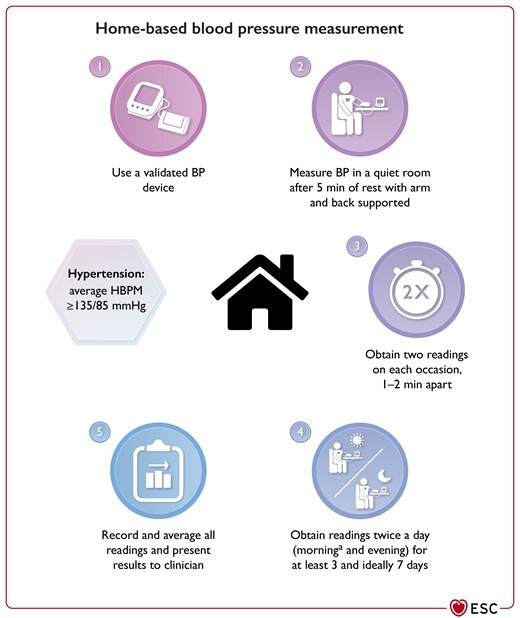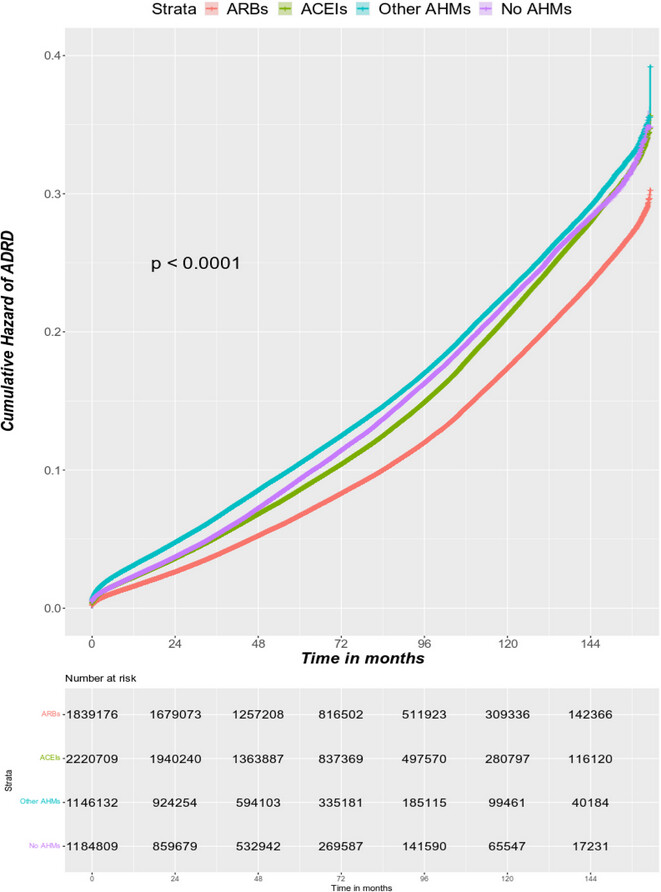Jonas
#161
2 Likes
Tim
#162
What dose did your mother take?
On the Hawthorn she is taking the Healths Harmony Hawthorn 4:1 Extract, 1 capsule (665 mg concentrated from 2660 mg) daily.
The price is right - on Amazon 4 months for $15.
2 Likes
adssx
#164
Independent paper on Aktiia in the Journal of Human Hypertension: Wearable cuffless blood pressure tracking: when will they be good enough? 2024
To understand the challenges of currently accepted methods and cuffless devices, I performed a 24-h blood pressure monitoring self-test, including measurements when awake, asleep and watching an intense match of the Rugby World Cup final, with the purpose to demonstrate the challenges and opportunities we face. Blood pressure was monitored using five different devices simultaneously: validated left and right arm cuff blood pressure, and three cuffless wearable devices (wrist-band, chest patch and a ring). Whilst none of these devices proved to be perfect in capturing a physiologically challenging measure, namely blood pressure, it emphasised that our current practice of a single blood pressure measurement in clinical practice should be revisited.
The Aktiia device (Fig. 1 Panel B) produced comparable systolic blood pressure when awake (p = 0.73) and during the rugby match (p = 0.54), but reported higher values when asleep (p < 0.001). This finding aligns with our previous independent comparison study in 41 patients.
Where a patient can usually only endure one 24-h cuff-based blood pressure measurement at a time, cuffless devices are used for weeks and months without the user being aware that readings are taken. The benefit of weeks or months’ worth of data compared to a single 24-h period, is perhaps underestimated.
With blood pressure changing all the time, it is likely that when more readings are taken, it may be better than fewer. In fact, when reflecting on current clinical practice mostly relying on a single snapshot clinic blood pressure taken (often imprecisely) for decision-making, one cannot help but wondering whether it is time to completely overhaul how blood pressure is measured in primary care. Current blood pressure measurement practices across thousands of busy clinics is certainly not ‘good enough’—the question is when cuffless readings will be good enough?
3 Likes
Tim
#165
Hawthorn has lowered my BP by ten points and counting.
With telmisartan 40 and amlodipine 5, I got my BP down to 123. Hawthorn bumped it down to 114. The ScienceDirect paper says it has been shown to be safe for up to two years. High BP can do some damage in two years.
3 Likes
How long does it take for Telmisartan to lower BP? I’ve been on it for about a month and my BP is about the same.
adssx
#167
About 2 weeks. How do you measure your BP? How often? Which dose are you using?
I use the BP machine at a doctors clinic. I’m usually in the 120s. I did measure it after work and it is about 37 C outside. So maybe the weather?
adssx
#169
Measure it at home using this protocol (2024 European guidelines):

Before eating or drinking coffee. So for instance after waking up before breakfast and in the afternoon or evening before dinner.
4 Likes
adssx
#170
Association between risk of Alzheimer’s disease and related dementias and angiotensin receptor Ⅱ blockers treatment for individuals with hypertension in high-volume claims data 2024

If people still needed to be convinced by telmisartan, massive study on 6 million people:
From 6,390,826 individuals with hypertension, there were 1,839,176 ARB users, 3,366,841 non-ARB AHM users, and 1,184,809 AHM non-users. The unadjusted KM curve showed that ARB users had lower cumulative hazard than other AHM users or AHM non-users (P < 0.0001). In Cox PH analysis, ARB users showed a 20% lower adjusted hazard of developing ADRD compared to angiotensin-converting enzyme inhibitor (ACEI) users and a 29% and 18% reduced hazard when compared to non-ARB/ACEI AHM users and AHM non-users (all P < 0.0001). Consumption of BBB-crossing ARBs was linked to a lower hazard of ADRD development than non-BBB-crossing ARBs, undetermined ARBs, and non-consumption of AHMs by 11%, 25%, and 31% (all P < 0.0001).
6 Likes
Not sure how much this has been addressed in this thread, but administration of ACEI drugs appears to block the RAS activation from empagliflozin. This does not occur with ARB co-administration.
Angiotensin pathways under therapy with empagliflozin in patients with chronic heart failure - PMC).
Here are some relevant quotes from the paper:
In addition, we performed an exploratory comparison of systemic haemodynamic parameters in patients treated with empagliflozin who received either ARB (23 patients) or ACEI (19 patients) co‐medication. Change in PWV from baseline to 1 as well as 3‐months therapy with empagliflozin was greater in the ARB (−1.05 and −0.42 m/s) compared with the ACEI (−0.006 and 0.30 m/s) group (P = 0.002, P = 0.014). Furthermore, change in central diastolic BP from baseline to 1 as well as 3 months (trend) therapy with empagliflozin was also greater for patients with ARB (−7.65 and −4.15 mmHg) compared with ACEI (−5.76 and 0.02 mmHg) co‐medication (P = 0.049, P = 0.064).
In patients with CHF, 1 and 3 months of therapy with empagliflozin lead to a rise in Ang I and Ang II as well as Ang‐(1‐7) and Ang‐(1‐5) compared with baseline, which was not present in the placebo group. Thus, our results indicate an activation of both the Ang I–ACE–Ang II receptor axis and the Mas axis. Most interestingly, the activation of both the Ang I–ACE–Ang II receptor axis and the Mas‐axis pathway after initiating treatment with empagliflozin was only observed in patients with ARB co‐medication. Patients with ACEI co‐medication did not show any empagliflozin‐induced activation of either pathway of the RAS.
We believe that the finding of the empagliflozin‐induced activation of both the Ang I–ACE–Ang II receptor axis (which still is blocked by the ARB medication) and the protective Mas axis only in patients with ARB co‐medication could have important implications for the treatment of CHF patients with SGLT2 inhibitors nowadays as first‐line treatment in patients with CHF.
In light of this, taking a ACE inhibitor in combination with a SGLT2 inhibitor may not be advisable as it will negate some of the positive effects of the SGLT2i activation of RAS (cardioprotective effects from the activation of the Mas-axis)
Taking a SGLT2i such as empagliflozin with an ARB such as telmisartan seems like a good combination, retaining the positive effects of each:
- Blood pressure regulation (key points from this study is ARB+SGLT2i was better in reducing PWV and central DBP than ACEi+SGLT2i)
- Metabolic benefits (reduces blood glucose, increased insulin sensitivity via PPARγ activation)
- Renal protection (intraglomerular pressure, CKD progression)
- Cardioprotection (via Mas-axis)
7 Likes
adssx
#172
This paper also points to potential synergies with valsartan + empagliflozin: Combining renin-angiotensin system blockade and sodium-glucose cotransporter-2 inhibition in experimental diabetes results in synergistic beneficial effects 2024
RAS blockade and SGLT2 inhibition display synergistic beneficial effects on BP, kidney injury and cardiac hypertrophy in a rat with hypertension and diabetes. The synergy does not involve upregulation of angiotensin-(1–7), but may relate to direct RAS-independent effects of empagliflozin in the heart and kidney.
2 Likes
adssx
#173
An Open-Label, Non-randomized, Drug-Repurposing Study to Explore the Clinical Effects of Angiotensin II Type 1 (AT1) Receptor Antagonists on Anxiety and Depression in Parkinson’s Disease
This small sample of ARB-treated PD patients displayed lower levels of anxiety. Randomized clinical trials are warranted.
Many of us reported lower anxiety with telmisartan. This study in people with PD seems to confirm the benefits.
5 Likes
I wonder if one would get similar effects with telmisartan +empa instead of valsartan+empa. I ask selfishly, since I have a ton of telmi on hand😅.
It’s in rats, but still interesting. There’s got to be a lot of people who take these drug combos, so there’s probably some clinical effects seen incidentally in some human studies.
3 Likes
In mice.
Effect of telmisartan on an experimental model of periodontitis in mice
Telmisartan is the most effective ARB to increase adiponectin via PPARα in adipocytes
“Telmisartan and irbesartan are angiotensin II receptor blockers (ARBs) and reportedly stimulate adiponectin secretion from adipocytes via partial peroxisome proliferator-activated receptor γ (PPARγ) activation. However, quantitative evaluation among different ARBs has not been performed. Adiponectin exerts strong protection against a number of pathological events by suppressing cell death, inhibiting inflammation, and enhancing cell survival, while leptin promotes inflammation, oxidative stress, atherogenesis, and thrombosis. The aim of this study was to identify the most effective ARB enhancing adiponectin secretion without raising leptin secretion from human white adipocytes (HWAs). Among seven ARBs (azilsartan, candesartan, irbesartan, losartan, olmesartan, telmisartan, and valsartan), telmisartan was the most effective ARB for the increase of adiponectin secretion and irbesartan was the second, whereas the other ARBs at 1 µM had no effect on adiponectin secretion. GW9662, a PPARγ antagonist, completely blocked pioglitazone (PPARγ agonist)-induced adiponectin secretion and mRNA expression, whereas it unexpectedly blocked neither telmisartan- nor irbesartan-induced adiponectin secretion and mRNA expression but rather increased them. GW6471, PPARα antagonist, and siRNA for PPARα suppressed telmisartan- and irbesartan-induced adiponectin secretion, suggesting that PPARα is the main target of these ARBs to increase adiponectin secretion in HWAs. Leptin secretion was not affected by any ARBs at 1 µM and GW9662 significantly decreased the basal secretion of leptin, suggesting that basal leptin secretion is regulated in a PPARγ-dependent manner. We conclude that telmisartan is the most effective ARB to increase adiponectin secretion via PPARα without raising leptin secretion from HWAs.”
2 Likes
In rats.
Simultaneous Determination of Telmisartan and Pitavastatin Calcium in Intestinal Perfusate by HPLC: Application to Intestinal Absorption Interaction Study
“The results showed that telmisartan and pitavastatin calcium were transported passively, and telmisartan and pitavastatin calcium could be absorbed well in all intestinal segments. The intestinal absorption parameters revealed the absence of any intestinal absorption interaction when co-administered.”
2 Likes
LukeMV
#178
Is there any advantage to using an ACEi (like enalapril) over an ARB (Telmisartan)? Seems like Telmisartan is better than all the ACEi’s and other ARBs.
2 Likes
That’s very individual and fitted to a particular situation. And fwiw, there’s longevity data in animals where ACE look good.
adssx
#180
Telmisartan is king  (until proven otherwise)
(until proven otherwise)
4 Likes